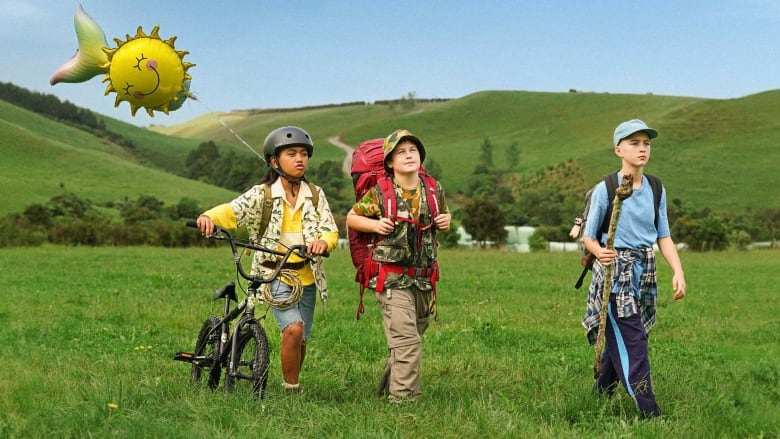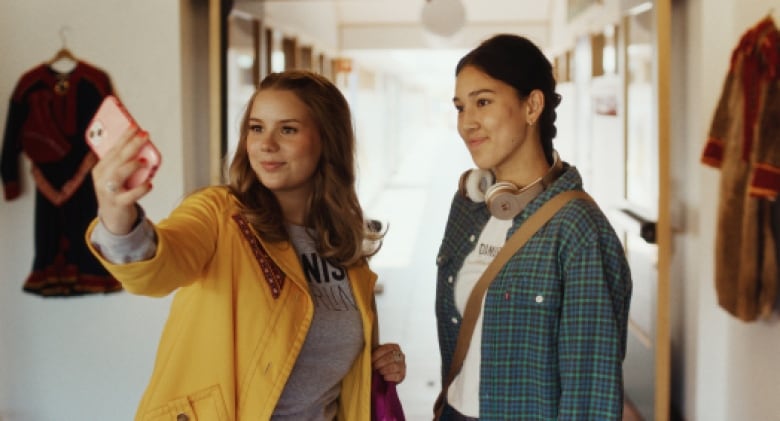First-time feature directors at TIFF connect international Indigenous experiences
'Try always to make something local, then it's easier to reach global,' says Smi director

From opposite sides of the globe, two international Indigenous films featured at the Toronto International Film Festivalthis yearembrace themes of family, community and connecting with identity in a contemporary world.
Egil Pedersen (My Fathers' Daughter) and Rachel House (The Mountain)are both first-time feature directors.
At 50, House makes her directorial debut withThe Mountain.
"We're from a generation where we were kind of knocked down a lot as women when we were younger and we weren't encouraged to to shine and I feel like, as you get older, you also stop listening to all that stuff and stop caring," she said.
House, who is Mori (Ngti Mutunga, Te Atiawa, Ki Tahu) from New Zealand, is known for her acting roles in Moana, Boy, Hunt For The Wilderpeople, and Whale Rider.Shesaid after about a decade of receiving scripts, she found this story by Tom Furnissresonated with her andshe infusedit with Moriculture and humour.
"I think this is the gift of being older as well don't waste your time on something you don't love," she said.
In The Mountain, Sam, a young girl raised outside of her Mori culture, is determined to reach Taranaki Mountain so that it can heal her from cancer. She meets up with new kids in town, Mallory and Bronco, whose Mori roots compel him to be a steward ofMother Earth.
She said Indigenous people from around the world share commonalities like a deep respect for the Earth.
Extensive consultation was required in order to receive permission to include Taranaki in the film. Mori considerTaranaki Maunga and other surrounding peakstheir ancestors and they were recently giventhe legal recognition of personhood.
House said she "wanted audiences everywhere to see some of the wisdom and magic that exists within Te Taiao, the natural world andto fall in love with our adventurous kids who discover that friendship can see you through just about anything."
She said she hopes audiences will feela sense of community with her film.
"We're all connected," House said.
"Every time I see a First Nations film it's just full of familiar feelings and familiar moments."
Exploring minority identity
Pedersen, who is Smifrom Norway, said he was "super proud and excited" to have his film at TIFF.
"I really could feel this emotional feeling like, 'Wow, I'm here. finally,'" he said.
"You know, this big dream about making a feature and premiering at one of the big festivals, it really came true."

Pedersen said he draws upon his own life experiences in his work.
"I aim to tell stories about minority identity in ways that audiences haven't seen before," he said.
"Through humour, I want to portray the absurdities of being a minority."
The film is set against the backdrop of Norway's northernmost region. It follows Smi teenagerElviraas she daydreams about the identity of her father, envisioning him to be Danish actorNicolaj Coster-Waldau, until one daywhen she discovers the truth.
My Fathers' Daughter was nearly a decade in the making. One of the biggest challenges in making it, Pedersen said, was that many people in the film industry had a preconceived idea of what a Smifilm should be.
Although telling stories abouthistorical traumaisimportant, Pedersen said, filmmakers should be free to tell whatever stories they want.
"Can't we just make contemporary stories? Can't we have the Smi culture as a backdrop and tell universal stories?" he said.
"If you try always to make something local, then it's easier to reach global."
The film is in Smi, Norwegian, English, Danish.












_(720p).jpg)


 OFFICIAL HD MUSIC VIDEO.jpg)
.jpg)



























































































